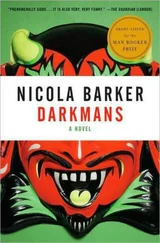In the nineteenth century a tradition begins of the relics of the three Marys being taken from the church down to the Mediterranean to commemorate their journey.
In 1935, the Marquis de Baroncelli (a French writer, cattle farmer, friend of the Romany, and fierce proponent of the culture and traditions of the Camargue) persuades the Catholic Church to allow the Romany people to take their own Saint Sara (a black-faced doll-like creature with a red ribbon at her neck) down to the sea.
She is Black Sara, saint of the Romany. She is a saint with many roots, of many origins. Like Kali, she plays with time. Like Durga, she is taken to the water. She is accepted by the Catholic Church — tolerated — but formally unrecognized. She aims to include but often alienates (the little town she lives in finds the massive annual influx of Romany — often intent on arranging marriages, making money, and settling scores — both terrifying and overwhelming). She is the saint who is no saint. She is the un-saint of the pretense of belonging. She is welcomed through gritted teeth. She is the curious contradiction, the gaudily dressed and the raucously celebrated. She is the incoherent, the sincere, the love, the confusion. She is everything and nothing.
Who is Black Sara?
The impostor? The mother? The creatress? The ancient? The merging? The last word? The first word?
She is so dark, so mysterious, so magical, that if you draw too close doesn’t she almost threaten to disappear?
Who is Sara la Kali?
Who is she?
Ah.
Don’t you already know the answer to that question?
Sara la Kali is the Pair of Opposites.
1874, approximately
Sri Ramakrishna is irritated when a disciple — Sambhu Charan Mallick, his Second Supplier of Provisions — calls him guruji :
“Who is the guru ?
And who is the disciple?
You are my guru !”
Of course, Sambhu blithely continues to address the prickly but charming guru as guruji just the same.
1876, approximately
Since Sri Ramakrishna rarely sleeps for more than a couple of hours a night, he may often be found — several hours before sunrise — wandering restlessly around his room, or climbing up onto the roof above and gazing out at the Ganga, or strolling up and down his verandahs, or mooching around in the Temple gardens. Whenever he draws close to the nahabat during his regular perambulations (the tiny storeroom at its base now home to his wife, Sarada Devi, his beloved niece Lakshmi, and often several other visiting women, all somehow crammed in with their cooking utensils, groceries, water jars and — because of his weak stomach — Sri Ramakrishna’s own special dietary provisions), the guru will clap his hands and cry out, “Lakshmi! Lakshmi! Get up! Get up! Chant the name of the Divine Mother! Get up! Get up! Waken your aunt! The crows and the cuckoos are about to sing!”
The women — exhausted after a long day of mundane chores and cooking — will refuse to rise at this ungodly hour. Sarada Devi will mutter to her niece, “Ssssh! The birds aren’t singing! Don’t respond!”
But more often than not, if the sleepy women unite to stage a mutiny, the mischievous saint will cheerfully generate unspeakable levels of wakefulness and consternation by playfully pouring a jugful of water under the doorsill (and drenching their thin straw mattresses with it).
Argh!
Time to get up, ladies!
Chant the name of the Divine Mother!
Come on! Come on!
Rise and shine!
1875, approximately
In the final years of her life, Ramakrishna’s ancient mother, Chandradevi (now in permanent residence with him at the Dakshineswar Kali Temple) starts to develop paranoid fantasies about his servant and nephew, Hriday. After the tragic death of Sri Ramakrishna’s other nephew, Akshay (from a mysterious fever in 1869), she starts to believe that Hriday has murdered him and constantly tells Sri Ramakrishna that Hriday is secretly conspiring to kill him and his wife, Sarada, too.
Another of her bizarre fantasies centers around food. She will never permit herself to consume her lunch before she hears the blowing of the conchs in Vaikuntha. Vaikuntha is the God Vishnu’s heavenly abode, a realm (not unlike Sri Ramakrishna’s Kali Temple) of fun and love and feasting.
Of course, Chandradevi is not yet a full-time resident of Vaikuntha, and the sound that she thinks is the blowing of conchs is in fact the loud whistle informing the workers at the local Alambazar Jute Mill of their half-hour lunch break.
By and large it’s perfectly fine that Chandradevi should wait to eat until the “conchs” have been blown. The only problem with this charming scenario arises on Sundays and holidays, when the mill is closed and the whistle is not sounded. Chandradevi will then go hungry. If pestered to eat she will indignantly demand how she might possibly be expected to take food herself before it has been offered to Lakshmi and Narayana (Narayan is a form of Vishnu and Lakshmi is his consort). Hriday is phlegmatic about this and tells Sri Ramakrishna that if the old woman is hungry she will simply disregard this eccentric and utterly self-imposed sacred injunction of hers. But Ramakrishna can’t bear the idea of his mother’s health weakening due to a lack of food, so he will spend hours trying to tempt her with succulent portions of Krishna’s prasad from the temple.
On one occasion Hriday comes up with a scheme to deceive the old woman by hiding outside her room and whistling on a pipe at the appropriate time. But Chandradevi — innocent as she is, simple as she is — will not be taken in by Hriday’s cunning ruse. In fact it probably only intensifies her paranoid fantasy that Hriday is a dangerous and manipulative charlatan.
But it can’t be all bad, can it? On weekends and during holidays Sri Ramakrishna’s time is generally taken up by scores of visitors to the Kali Temple, so his doting mother may be expected to see considerably less of her son on these occasions. Unless she suddenly refuses to eat, that is.
Ah, the conchs! The conchs! Whither the heavenly conchs of Vaikuntha?!
Whither, indeed.
1875. The guru’s sadhana is now complete. He has been told by Ma Kali that he has been placed here on earth for the benefit of mankind. But while local notoriety and the loyalty of a clutch of passionate devotees is all well and good, a serious guru (even one who will not call himself a guru) needs proper disciples. So Ramakrishna waits and he waits. And he waits. Oh when, oh when will they come?!
He stands on the roof
Wailing into the darkness
For his disciples!
Perhaps something — or … or some one —might be putting them off?
1869, at the Dakshineswar Kali Temple (six miles north of Calcutta)
I could never be angry with Uncle. No. Not ever. But my heart has been broken twice over, and I am not sure who will be able to mend it aside from God. Last year, after our return from Kamarpukur, Mathur Baba and his wife, Jagadamba, invited Uncle and myself on a grand pilgrimage to all of the holiest places in northwestern India — to Deoghar and Allahabad and Kasi and Varanasi and Vrindaban. There were 125 people in our party. Oh, the adventures that we had! Mathur Baba booked four entire railway carriages for our private use which could be unhooked from the main engine if we decided to tarry. We traveled in such elegance and style (although Uncle and I climbed off the train a few stops before Varanasi and accidentally got left behind — but were then promptly rescued by a kind official of the railway company!).
Over one hundred thousand rupee s were spent on the trip. Mathur Baba was shaded, at all times, by a servant holding a silver umbrella and accompanied — to the fore and to the rear — by liveried servants with silver maces. He was like a great prince. Everywhere he went people stared after him in amazement. He hosted special feasts for local Brahmins . He rented two magnificent houses and we lived there for several months in the lap of luxury. He even hired Uncle a palanquin so that if he fell into ecstasy on his way to visit the many temples he would not harm himself unduly. And of course wherever Uncle traveled in his palanquin, loyal Hridayram was always in attendance, like a shadow, walking several paces behind him.
Читать дальше












